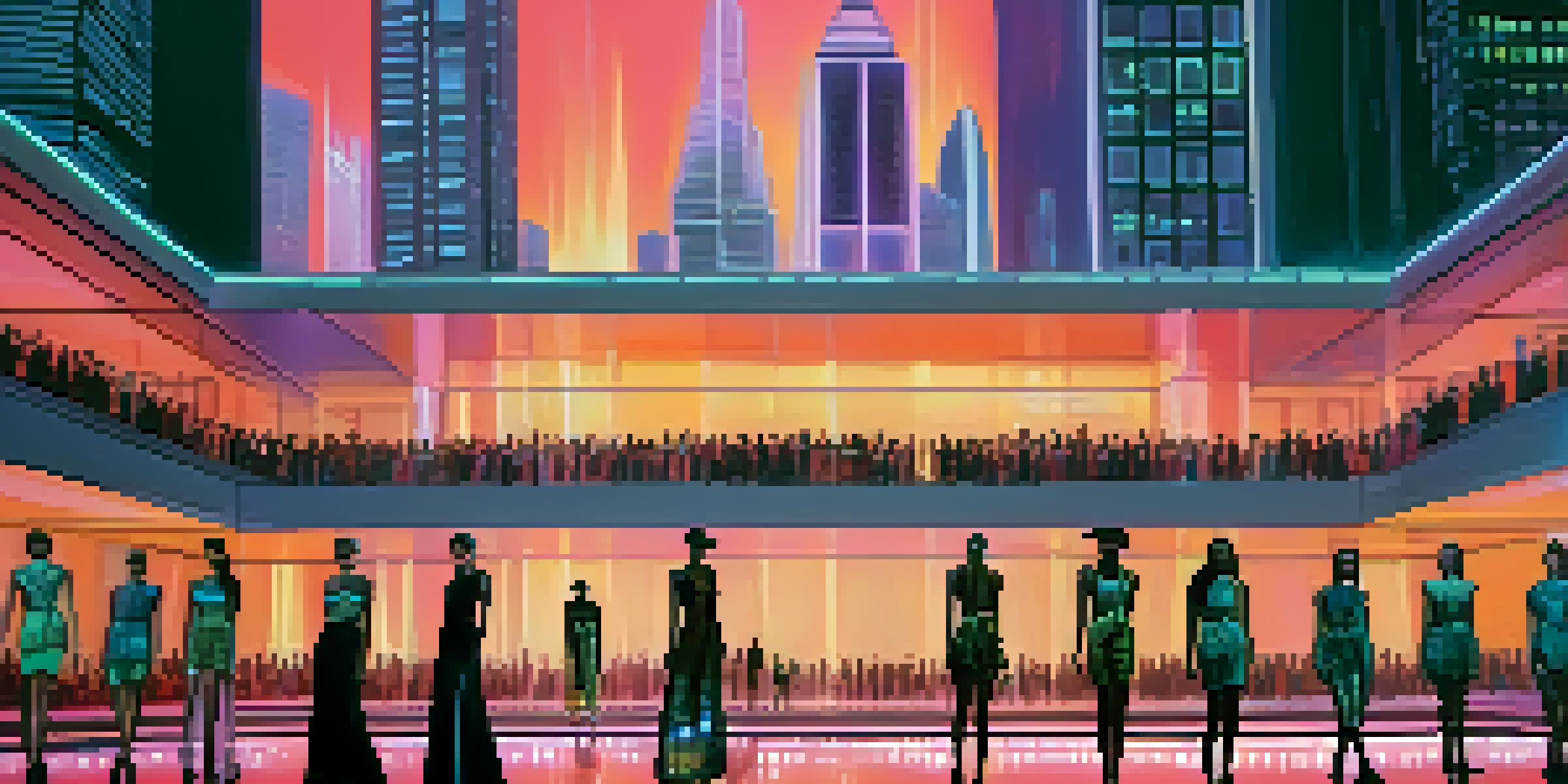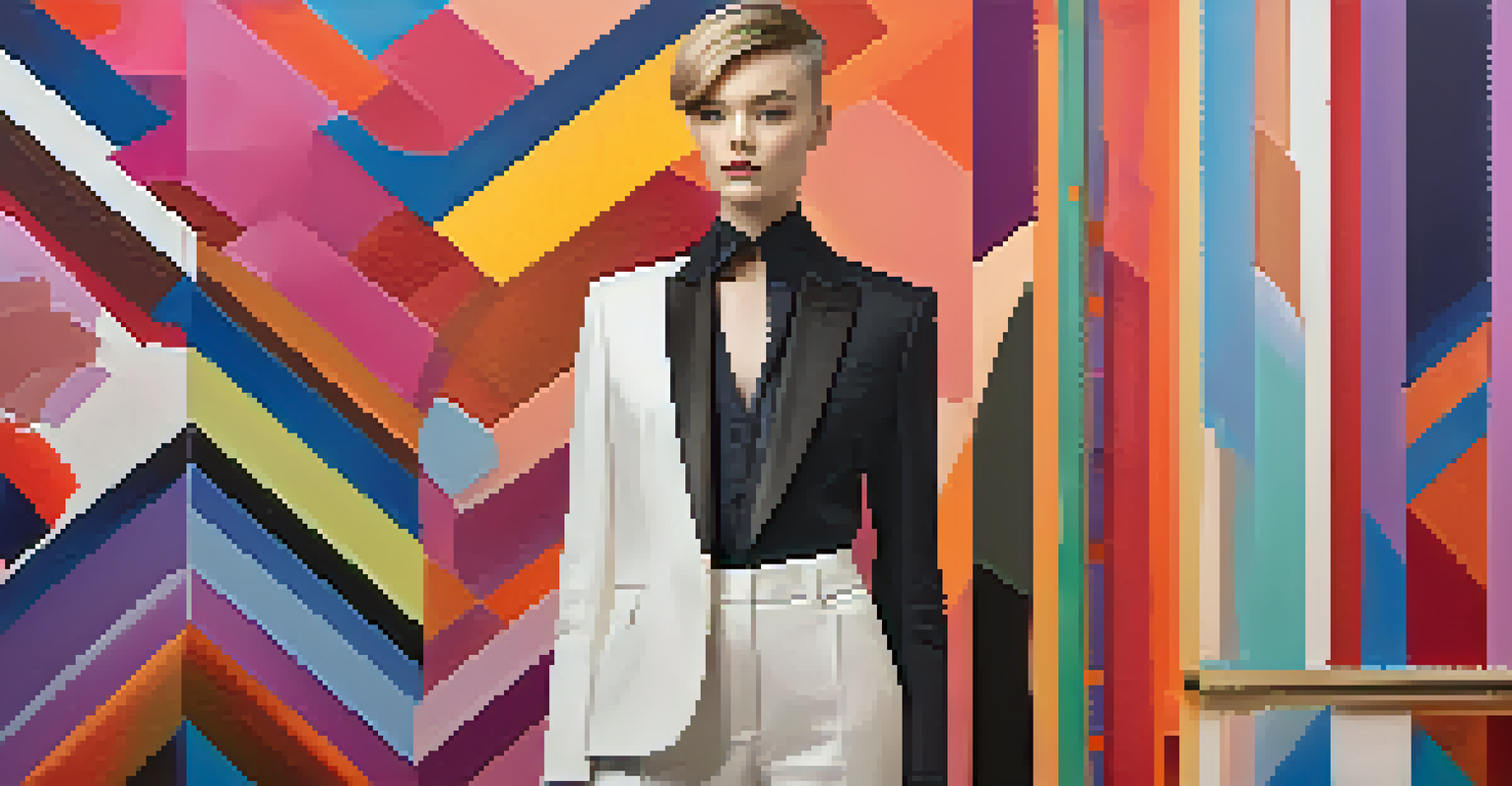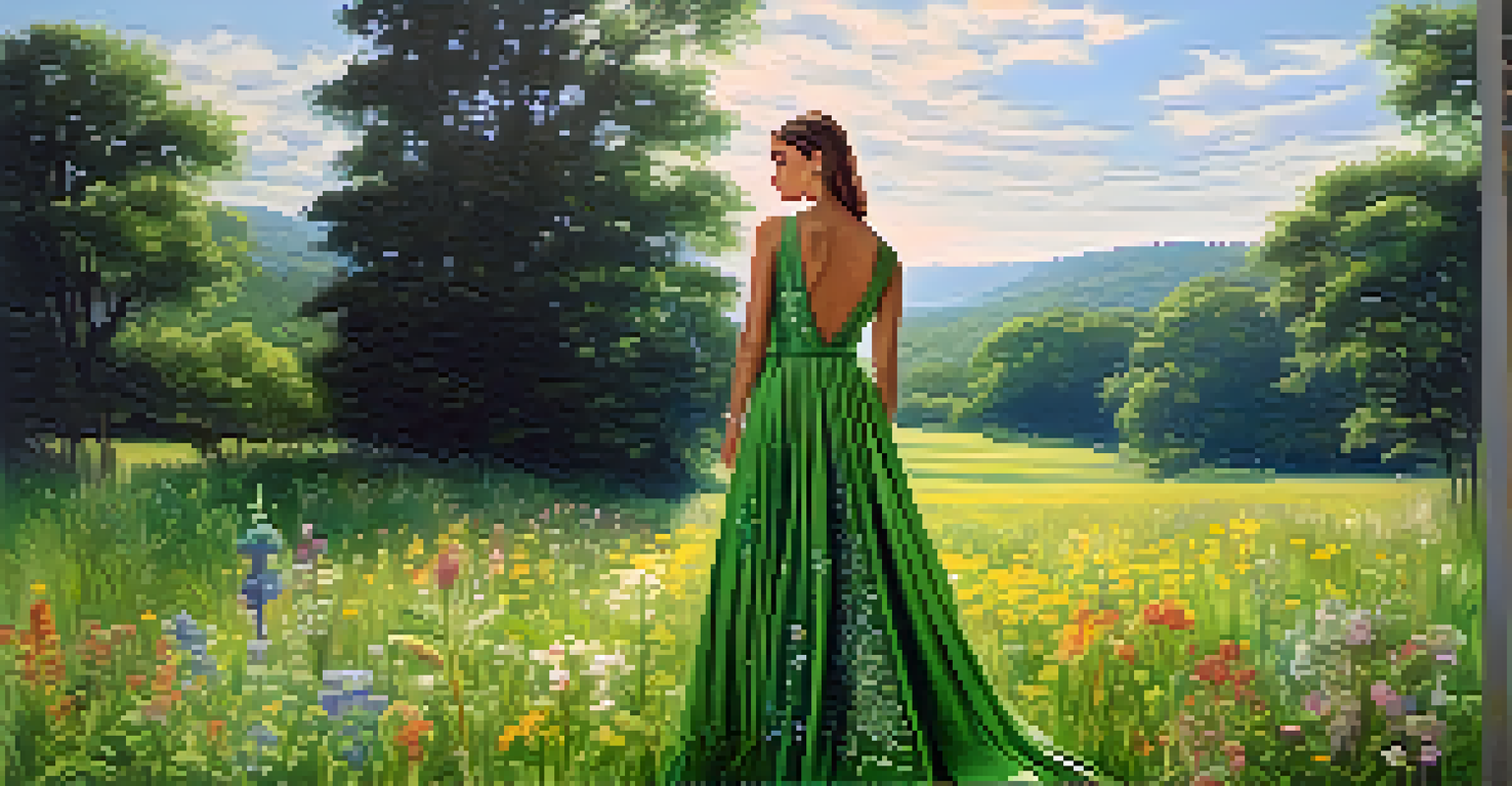Fashion in Sci-Fi: Trends Inspired by Futuristic Films

The Intersection of Fashion and Sci-Fi
Fashion and science fiction have always shared a unique relationship, influencing each other in fascinating ways. Sci-fi films often present visions of the future that challenge our current understanding of style and functionality. This intersection invites designers to think outside the box, merging technology with creativity to craft imaginative looks.
Fashion is the armor to survive the reality of everyday life.
For example, films like 'Blade Runner' and 'The Matrix' showcase styles that are not only visually striking but also reflect deeper themes of identity and societal evolution. These films push the boundaries of traditional fashion, sparking new ideas that resonate in today's wardrobes. As a result, many contemporary designers draw inspiration from these cinematic elements, creating pieces that echo the futuristic vibes of these beloved films.
Ultimately, this blending of fashion and sci-fi encourages a dialogue about how we express ourselves through clothing in a rapidly changing world. It challenges us to consider the role of fashion in our lives and how it can evolve with technology, making it a thrilling topic for both fashion enthusiasts and sci-fi fans alike.
Iconic Sci-Fi Films and Their Fashion Impact
Several iconic sci-fi films have left a lasting mark on fashion trends, shaping how we perceive futuristic styles. For instance, the sleek, minimalistic designs in 'Star Trek' have influenced everything from casual wear to high fashion, emphasizing functionality without sacrificing style. The show’s iconic uniforms, with their bold colors and clean lines, are a testament to how sci-fi can redefine professional attire.

Another notable example is 'Dune,' where the intricate costumes reflect the film's rich world-building and cultural nuances. The flowing fabrics and layered looks inspire modern designers to experiment with structure and silhouette, blending the ancient with the futuristic. This ability to evoke a sense of place while remaining forward-thinking is what makes these films so relevant in current fashion discourse.
Fashion Meets Sci-Fi Innovation
The intersection of fashion and sci-fi fuels creativity, inspiring designers to merge technology with imaginative styles.
As these films continue to inspire, we see designers incorporating elements like metallic fabrics, asymmetrical cuts, and avant-garde accessories into their collections. This trend not only honors the original works but also encourages a new generation of creators to explore the boundaries of fashion further.
Tech-Infused Fashion: A Sci-Fi Reality
The rise of wearable technology is a direct reflection of the futuristic concepts presented in sci-fi films. From smart fabrics that change color to clothing embedded with sensors, tech-infused fashion is becoming a reality, much like what we see in movies like 'Her' or 'Minority Report.' These innovations not only enhance our wardrobe but also align with the narrative of a future where technology and personal expression intersect.
The future belongs to those who believe in the beauty of their dreams.
Fashion designers are now collaborating with tech companies to create pieces that are both functional and stylish. For example, the integration of LED lights in clothing has become a popular trend, allowing wearers to personalize their looks in real-time. This shift not only transforms the way we perceive clothing but also how we interact with it, making fashion a dynamic part of our everyday lives.
As we embrace this tech-forward approach to fashion, the influence of sci-fi becomes even more apparent. It encourages us to envision a future where our clothing can adapt to our needs, reflecting the ever-changing landscape of our modern existence.
Sustainable Fashion in Sci-Fi Narratives
Sustainability is a growing concern in both the fashion industry and sci-fi narratives, where resource scarcity and environmental issues are often central themes. Films like 'The Matrix' and 'WALL-E' not only entertain but also serve as cautionary tales about the consequences of consumerism and waste. This has prompted designers to rethink their approaches, creating collections that prioritize eco-friendly materials and practices.
Incorporating recycled fabrics, upcycled designs, and ethically sourced materials reflects an understanding of the world’s challenges while drawing inspiration from sci-fi. These forward-thinking designers are crafting garments that tell a story, echoing the messages found in their favorite films. By doing so, they not only create fashion that looks good but also feels good, knowing it’s contributing to a better future.
Sustainability in Sci-Fi Designs
Many sci-fi narratives emphasize sustainability, prompting designers to create eco-friendly collections that reflect these themes.
This connection between sci-fi and sustainable fashion highlights the potential for change and innovation. As more designers embrace these principles, we may see a shift toward a more conscious fashion industry, one that resonates with the ideals portrayed in our favorite sci-fi stories.
Cultural Reflections in Sci-Fi Fashion
Fashion in sci-fi films often serves as a mirror reflecting cultural attitudes and societal norms. From the bold styles of 'Fifth Element' to the post-apocalyptic aesthetics in 'Mad Max,' these films encapsulate the zeitgeist of their time. Designers draw on these cultural cues, creating pieces that resonate with audiences both on and off the screen.
For instance, the exaggerated silhouettes and vibrant colors in 'Fifth Element' challenge traditional beauty standards, encouraging individuals to express their uniqueness. Similarly, 'Mad Max' showcases a rugged, utilitarian style that speaks to resilience and survival, paralleling contemporary discussions about sustainability and resourcefulness. These narratives not only shape fashion but also inspire critical conversations about identity and belonging.
As we explore the cultural implications of fashion in sci-fi, it's clear that these films offer more than just entertainment. They provide a canvas for dialogue about our values, aspirations, and the futures we envision, encouraging both designers and consumers to engage with fashion in a meaningful way.
Gender Fluidity in Sci-Fi Fashion
Sci-fi films have long challenged traditional gender norms through their representation of fashion. The fluidity of gender expression in movies such as 'Blade Runner 2049' and 'The Hunger Games' allows for a more inclusive approach to fashion. This shift encourages designers to create collections that transcend gender boundaries, reflecting a broader understanding of identity.
Costumes in these films often feature androgynous silhouettes, mixing elements traditionally associated with both masculinity and femininity. This blending of styles not only promotes acceptance but also inspires a new wave of fashion that celebrates individuality. As designers embrace this concept, we see an increase in unisex collections that cater to a wider audience, allowing everyone to express themselves authentically.
Gender Fluidity in Fashion
Sci-fi films challenge traditional gender norms, inspiring unisex collections that celebrate individual expression and inclusivity.
Ultimately, the exploration of gender fluidity in sci-fi fashion highlights the power of clothing as a form of self-expression. By challenging conventions, these films empower individuals to break free from societal constraints, paving the way for a more inclusive future in the fashion industry.
The Future of Fashion Inspired by Sci-Fi
As we look ahead, the influence of sci-fi on fashion shows no signs of slowing down. With advancements in technology and a growing awareness of social issues, designers are poised to create even more innovative pieces that push the boundaries of what we consider fashion. Whether it's through virtual reality fashion shows or clothing that adapts to the environment, the future is ripe with possibilities.
Moreover, the rise of social media and digital platforms allows for immediate feedback and interaction between designers and consumers. This dynamic relationship fosters a collaborative spirit, where ideas inspired by sci-fi can come to life in real-time. The fashion industry is becoming a space for experimentation, where concepts that once seemed far-fetched are now within reach.

In conclusion, the intersection of fashion and sci-fi is a vibrant and evolving landscape. By embracing the imagination and creativity of these futuristic narratives, we can look forward to a future where fashion not only reflects our dreams but also our values and aspirations.